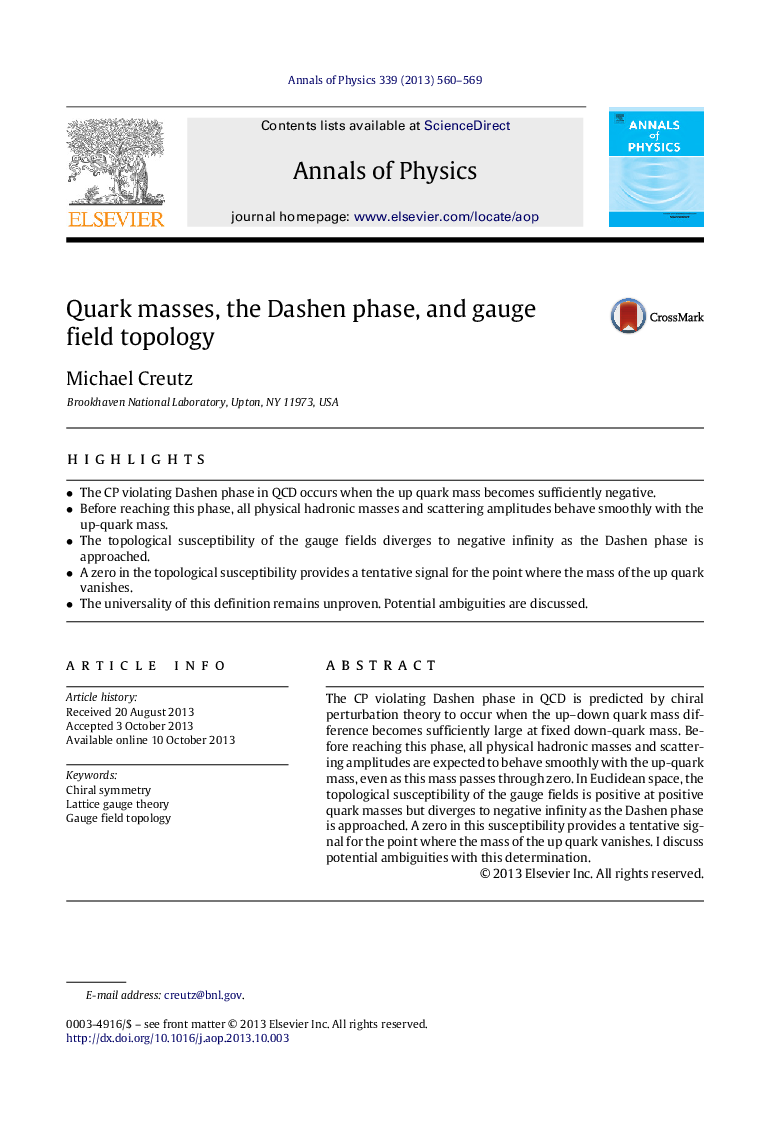| Article ID | Journal | Published Year | Pages | File Type |
|---|---|---|---|---|
| 1854995 | Annals of Physics | 2013 | 10 Pages |
•The CP violating Dashen phase in QCD occurs when the up quark mass becomes sufficiently negative.•Before reaching this phase, all physical hadronic masses and scattering amplitudes behave smoothly with the up-quark mass.•The topological susceptibility of the gauge fields diverges to negative infinity as the Dashen phase is approached.•A zero in the topological susceptibility provides a tentative signal for the point where the mass of the up quark vanishes.•The universality of this definition remains unproven. Potential ambiguities are discussed.
The CP violating Dashen phase in QCD is predicted by chiral perturbation theory to occur when the up–down quark mass difference becomes sufficiently large at fixed down-quark mass. Before reaching this phase, all physical hadronic masses and scattering amplitudes are expected to behave smoothly with the up-quark mass, even as this mass passes through zero. In Euclidean space, the topological susceptibility of the gauge fields is positive at positive quark masses but diverges to negative infinity as the Dashen phase is approached. A zero in this susceptibility provides a tentative signal for the point where the mass of the up quark vanishes. I discuss potential ambiguities with this determination.
